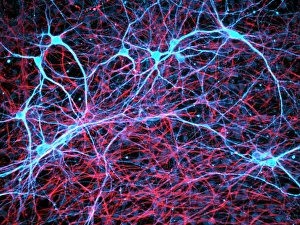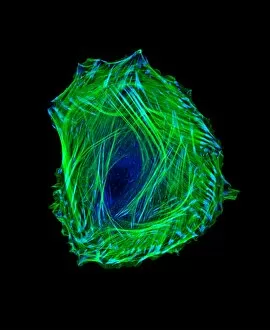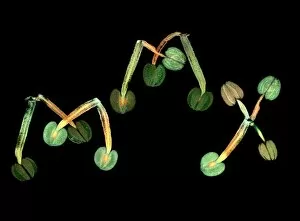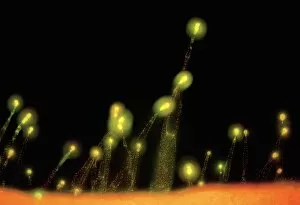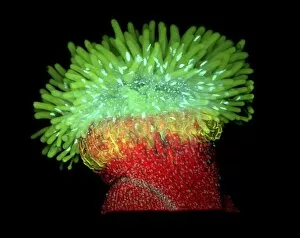Fluorescence Micrograph Collection
"Unlocking the Hidden World
All Professionally Made to Order for Quick Shipping
"Unlocking the Hidden World: Exploring Fluorescence Micrographs" Step into a mesmerizing realm where nerve and glial cells reveal their intricate beauty under the lens of a fluorescence micrograph. This captivating light micrograph unveils the delicate network of these vital components, showcasing their role in transmitting signals throughout our bodies. Witness the awe-inspiring process of cell division as dividing cells gracefully dance across this microscopic stage. Each moment captured in this fluorescent masterpiece showcases the remarkable complexity and precision involved in creating new life. Delve deeper into nature's wonders with a glimpse at a Thale cress flower through the lens of a micrograph. The vibrant hues and intricate patterns highlight its exquisite structure, reminding us of the astonishing diversity found within even the tiniest organisms. Embark on an exploration of embryonic smooth muscle cells, as they take center stage in another stunning fluorescence micrograph. Witness their development unfold before your eyes, capturing every step towards becoming fully functional muscles that power our movements. Journey alongside neural progenitor cells as they undergo differentiation, showcased vividly in yet another breathtaking fluorescence micrograph. Marvel at how these specialized cells transform into various types within our complex nervous system, paving the way for proper brain function. Behold an actin-based motility phenomenon captured through a light micrograph – an enchanting display of cellular movement orchestrated by this essential protein. Witness its crucial role in shaping cellular architecture and facilitating numerous biological processes. The symphony continues with multiple glimpses into mitosis - nature's choreographed spectacle of cell division depicted repeatedly throughout this collection. Observe each meticulous phase as chromosomes align, duplicate, separate, ensuring accurate distribution to daughter cells during this fundamental process. However, amidst harmony lies occasional discordance; witness abnormal mitosis caught frozen in time within one striking image. Explore anomalies that challenge normalcy but provide valuable insights into understanding diseases such as cancer or genetic disorders affecting cell division dynamics.

